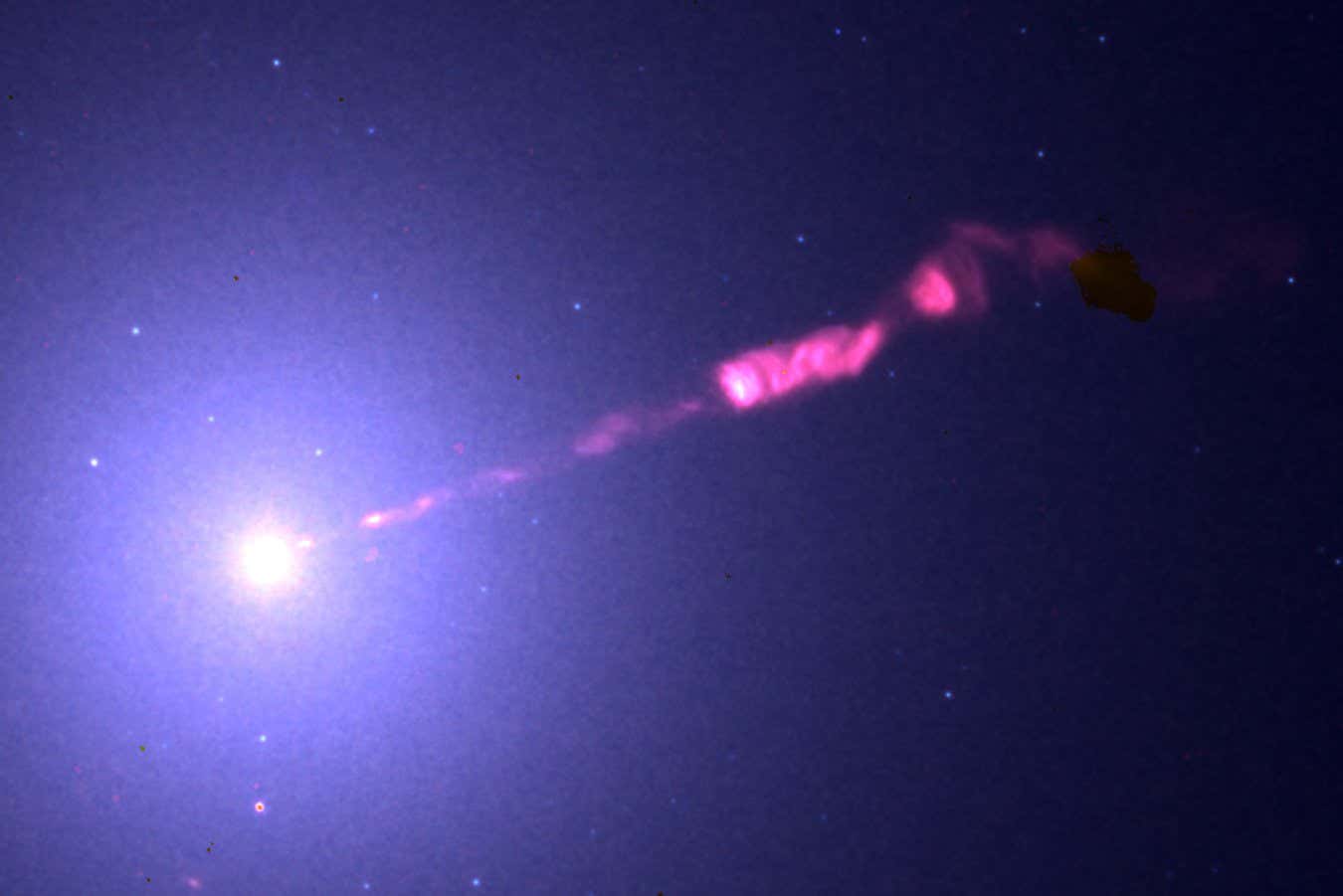
The jet blasting out of the black hole at the centre of the galaxy M87
Jan Röder; Maciek Wielgus et al. (2025)
More than a century ago, astronomer Heber Curtis spotted the first black hole jet – a vast stream of superheated plasma from the supermassive behemoth that sits at the centre of galaxy M87. Now, the James Webb Space Telescope has observed this jet in extreme detail.
Since it was first spotted in 1918, the jet from M87’s black hole – which was famously the first black hole to be imaged in 2019 – has been observed by a multitude of telescopes and is arguably the most studied black hole jet. However, many of its features still elude explanation, such as several bright-shining regions, as well darker helix-shaped regions. Astronomers think these are likely to be caused by the jet beam refocusing or different strands recombining as it encounters new material, such as a denser, gassy region. But the underlying mechanisms remain mysterious.
Now, Maciek Wielgus at the Institute of Astrophysics of Andalusia in Spain and his colleagues have looked at M87’s jet with the James Webb Space Telescope (JWST), revealing its well-known bright features in more detail. They were also able to capture the near-invisible and less commonly seen counter-jet, which fires in the opposite direction out of the other side of the black hole.
Wielgus and his team took the data from a different study observing M87’s stars, which JWST’s infrared sensors are particularly sensitive to. This overwhelming starlight also rendered the jet hard to make out, so they had to reanalyse the data to remove the polluting light. “It’s a very practical example of what astronomers often say, which is one astronomer’s trash is another astronomer’s data,” says Wielgus.
The first bright point on the jet, called Hubble Space Telescope-1 after the telescope that discovered it, is thought to be caused by the jet’s compression as it goes into a higher pressure region. This is similar to the bright diamond-shaped structures seen in the exhaust from a rocket engine.
The team could also see the end of M87’s other, opposite jet, the beam of which is typically much harder to see. Because it is speeding away from us at near the speed of light, Einstein’s theory of special relativity means it will appear much dimmer to us than it really is. But when this beam hits another region of gas at a different pressure, it spills out and becomes visible.
This, together with the end of the visible jet nearer to us, marks the edge of a bubble of material that surrounds M87. Now that the other end of the jet has been imaged in infrared in such detail, astronomers can start modelling what sort of gas structures might be in this bubble, says Wielgus.
Mysteries of the universe: Cheshire, England
Spend a weekend with some of the brightest minds in science, as you explore the mysteries of the universe in an exciting programme that includes an excursion to see the iconic Lovell Telescope.
Topics:
Source link : https://www.newscientist.com/article/2498113-astronomers-captured-an-incredible-view-of-m87s-black-hole-jet/?utm_campaign=RSS%7CNSNS&utm_source=NSNS&utm_medium=RSS&utm_content=home
Author :
Publish date : 2025-09-30 11:00:00
Copyright for syndicated content belongs to the linked Source.